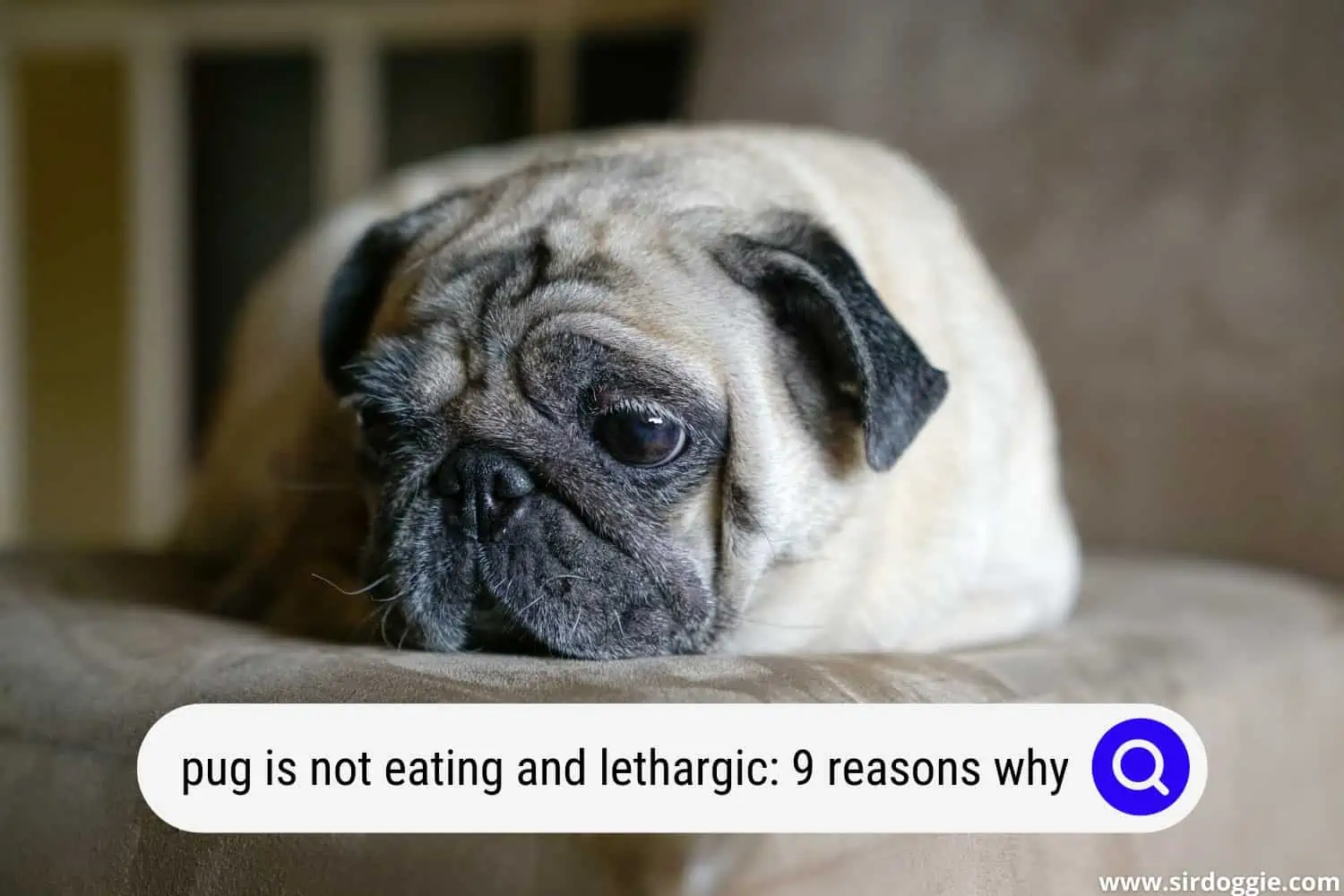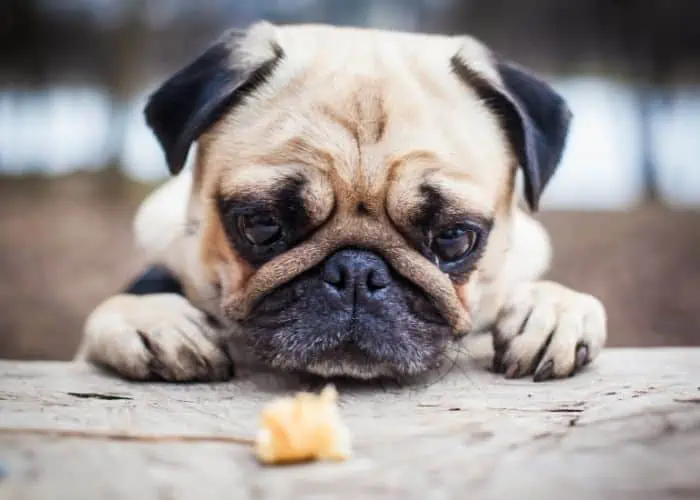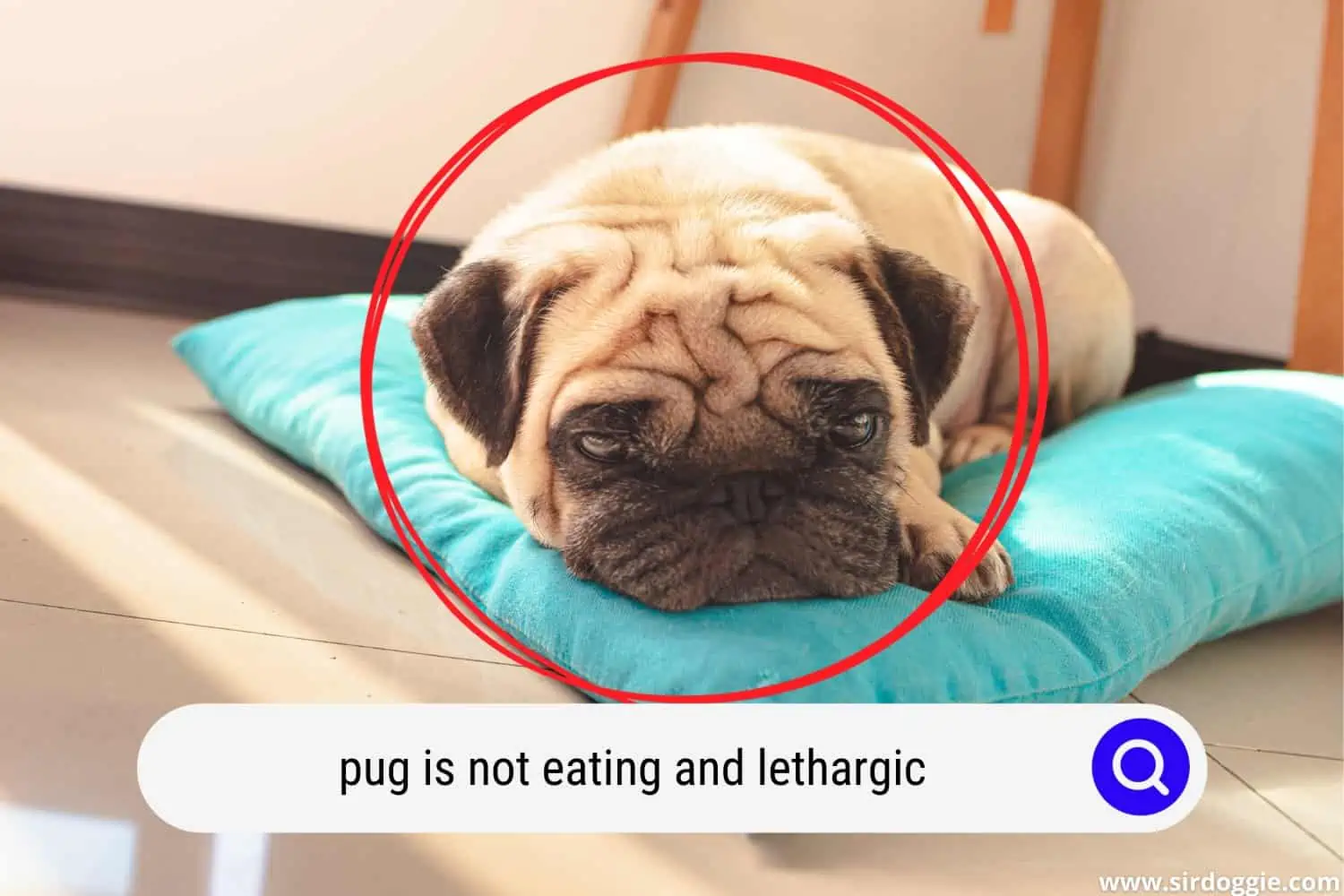A Pug Is Not Eating and Lethargic: 9 Main Reasons Why It Happens
If you are a truly devoted, caring pet parent, it will bother you greatly when you notice that your dog is not eating and is lethargic all of a sudden. How can an active, playful, and full of energy pooch become uninterested in the things it did before?
Well, dogs are just like us, we are all animals. In fact, both the two- and four-legged have very similar issues when it comes to our health. Some of these issues might be obvious, while others might not. They could be physical or mental, doesn’t matter. Also, all breeds are equally affected when it comes to changes in their appetite as well as mood. Pugs are no exception. So if you were wondering why your Pug is not eating and lethargic, we are about to dive right into the subject.

A Pug Is Not Eating And Lethargic: 9 Main Reasons For Such Behavior
Here are the main reasons why a Pug is not eating and is lethargic as well as may be acting completely out of character. See if you can find some that would correspond to what your mutt is experiencing.
1. A Mutt Might Be Overheated
A very common occurrence during the hot summer months. Pugs are usually greatly affected by rising temperatures as they have ingrained breathing problems they inherit from their ancestors. Because of their peculiar-shaped heads and muzzles, as well as very narrow airways, Pugs will have a harder time inhaling hot air. A pet parent will notice some heavy Pug panting if it becomes too hot. It can be so bad, to the point of developing seizures and heatstrokes. Try to limit your pooch’s time outside during solstice: between 12 and 4 pm.
2. Dehydration
It kind of goes hand-in-hand with being overheated. Normally, during the summer, a dog might have to drink a lot more than in the winter. The reason is that most of the moisture evaporates with sweat and while panting. Yes, you heard it, pooches sweat just like humans do! The only difference is that their sweat glands are located on their paws and noses. It may surprise you, but they do sweat in the armpit area as well! Hence, your adorable Pug creature will have to drink aqua a lot more often to avoid possible dehydration. Planning a trip to the park? Make sure to bring plenty of H2O with you to hydrate both yourself and your playful buddy.
3. Separation Anxiety
A very common reason for seeing a sad Pug puppy. Some of them cannot handle it when a pet parent has to leave for a few hours, they just go berserk. An owner may observe excessive whining, feet-biting, and nervously running back and forth. Not a pleasant sight to see if you ask me.
Even worse if one of the parents leaves the household due to a divorce or hospitalization. All hounds are creatures of habit and bond fast with their masters. Pugs are actually “topping the charts” when it comes to the unlimited loyalty to their human mommies and daddies. Sometimes they become attached to one parent more than the other, actually. It depends on who spends more time with a pup during the day. If the “favorite” one leaves permanently, a Pug pup becomes very moody. It stops eating, is always sad, prefers to be in isolation, and loses interest in previously enjoyed activities. Notice such signs? Time to pay a visit to your local vet or a canine trainer.

4. Depression
If you are asking yourself: “Why is my Pug not eating?” one very serious condition might be a mental disorder like depression. Even though canine depression is not as well-researched as human one, pooches exhibit the same symptoms as affected two-legged ones would. Like one anti-depressant commercial states, if you happen to see it on TV: “Depression Hurts.” It does, and four-legged creatures suffer more than their human counterparts sometimes. They just can’t express their feelings to you orally, but use body language signs instead.
5. Hidden Illness
Sometimes a Pug is not eating and is lethargic because there might be something bothering it physically. It could be a kidney issue, stomach trouble, or even a tooth infection. Possible signs besides not eating may include prolonged whining, vomiting, diarrhea, dizziness, and constipation. If you notice any of these signs, it is best to bring your flat-faced pooch to the vet without delay.
6. Injury
Since Pugs are prone to injuries because of their skeletal peculiarities, no wonder they get injured easily. If you notice any limping, wobbly walking, and wining while stepping on one of the paws, it may indicate that they might have a strained muscle, an injured joint, or a fractured bone. You might want to bring your fur pal to the vet immediately for some much-needed X-rays.
7. Boredom
It is as simple as that. Your Pug might be moody just because it has nobody to play with. That’s why it is not eating like it should and seems more depressed than usual. In case you have to leave your precious friend home alone for a while, try to scatter a few of their favorite toys around to make his time somewhat enjoyable.
If that doesn’t solve the problem, talk to your family and friends to find out who wouldn’t mind spending time with a furry creature. However, if you don’t have the luxury of relying on your social circle, then turn to dog-walking services like Rover.com. The platform has hundreds of great sitters all over the US, therefore it will be easy to find a good match.
8. Sleep Deprivation
Don’t humans get cranky if they don’t get enough sleep? I’m sure that each of us experienced what it’s like not to get enough rest and wake up feeling “beat up.” Canines are not an exception, as they are also animals like us. A sleep-deprived pooch will be eating less, will have less energy to participate in its favorite daily activities, and be sleeping a lot during the day. Choose a distraction-free, comfortable space for your buddy to sleep and provide comfortable bedding for some good night zzz’s.
9. Old Age
this one is not a result of an injury, depression, or insomnia. Your Pug is, unfortunately, getting old and its body is slowing down day after day. It is just a course of life, there’s no stopping it. A pet parent might notice that the older a canine companion becomes, the less energy it has, and its appetite changes drastically. Talk to your vet about a possible solution for such behavior, like prescription medications, changes in a daily diet, and administering food supplements to keep an aging pooch as healthy as possible.

Curl-Up
We’ve just covered the most common reasons why a Pug is not eating and is lethargic. Whatever it is separation anxiety, boredom, an injury, or some illness harboring inside that little wrinkled body, it shouldn’t be treated lightly.
If you start noticing some alarming signs like appetite loss, diarrhea, dehydration, or moodiness, take a Pug pal to a trusted vet to find out what the reason might be. After all, the happier a fluffy companion will be, the happier its owner will be as well.
Related Reading: Pug CT Scan

Family Dog Expert Author
Hi there! I’m Stuart, a devoted dog lover and family dog expert with over a decade of experience working with our furry companions. My passion for dogs drives me to share my knowledge and expertise, helping families build strong, loving bonds with their four-legged friends. When I’m not writing for SirDoggie, you’ll find me hiking, playing with my beautiful dog, or studying music.